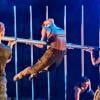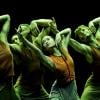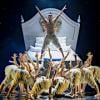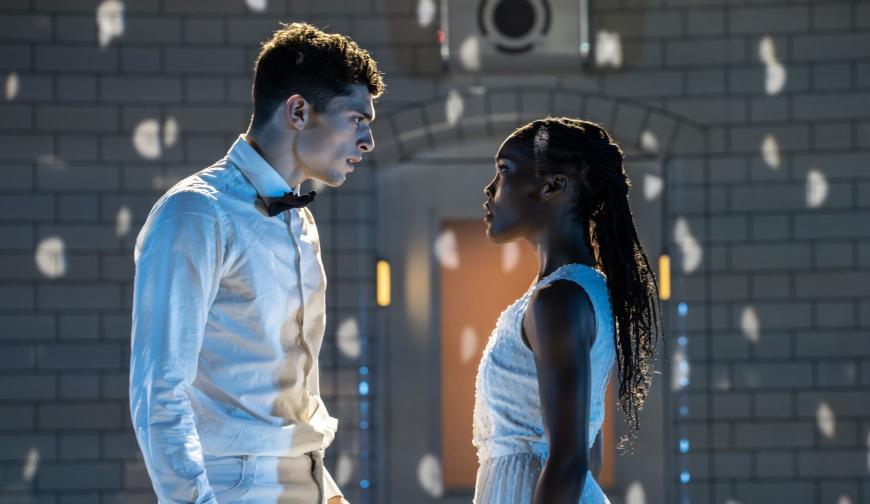
Los Angeles feels as if it’s a home away from home for Matthew Bourne, who is widely hailed as the United Kingdom’s most popular and successful choreographer and director. It was his version of the Pyotr Tchaikovsky classic Swan Lake, which jettisons a flock of dainty female swans for violent, bare-chested, barefooted male avians, that, after originally premiering in London in 1995, landed in the City of Angels two years later in its international debut.
Since then, Bourne’s company New Adventures has performed a myriad of productions at the Ahmanson Theatre, including The Car Man (2000), Edward Scissorhands (2005), and Sleeping Beauty (2012). And while The Red Shoes was the troupe’s last new production to be seen at the Ahmanson, in 2017, its Cinderella returned in 2019, two decades after having had its American premiere at that very theater. Bourne fans can take heart again, now that New Adventures returns to the Los Angeles venue where it all began to present the North American premiere of the company’s Romeo and Juliet, with performances Jan. 28 – Feb. 25.
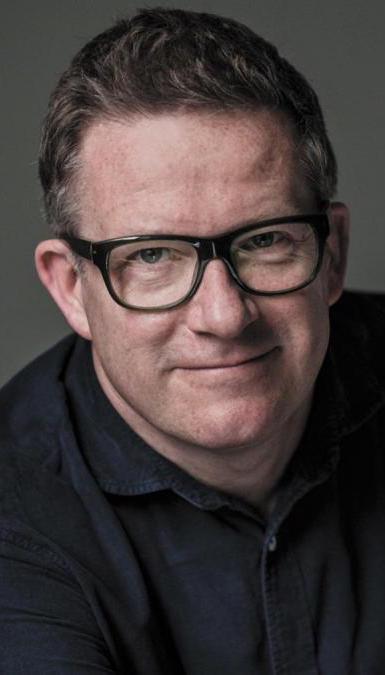
When asked over Zoom what keeps him coming back to Los Angeles, Bourne replied succinctly, “Audiences. I’ve always loved the Los Angeles audience. It’s been a long relationship, but the reaction, the understanding, and the warmth — people are surprised when I say all this. But I found the audience is very open to what I do. I wondered whether it was because it’s a different art form I’m working in — that people [in L.A.] work in the movies and are more readily open to something [else].
“It’s not what they do in New York,” added Bourne, “[where] audiences feel a bit more judgmental.”
But Bourne’s success over the years speaks for itself, with the artist having racked up a slew of awards for his many productions. The only British director to have won the Tony Award for both Best Choreographer and Best Director of a Musical (for his Swan Lake), he’s received, among other honors, 12 Olivier Award nominations, including nine wins, and was made an officer of the Order of the British Empire for his services to dance in 2001, followed by a knighthood in 2016.
Famous for telling stories with an inimitable theatrical bent, the Brit, who came to dance at the relatively late age of 22 and recently turned 64, has created another gem in Romeo and Juliet. Instead of feuding families propelling the action, the bleak environment of the fictional Verona Institute is the setting, colonized by teens and overseen by nasty guards and medics eager to dispense behavior-controlling drugs. Compared to the extravagances found in traditional balletic stagings of the Shakespeare classic — costuming, sets, grand balls, and the like — Bourne’s radical take is very much a 21st-century one. Here are power dynamics at play, with themes of mental health and sexual harassment also front and center.
But Bourne, in his retelling of the classic, does make use of Sergei Prokofiev’s score, heard in a new orchestration by Terry Davies, who’s been with New Adventures for some 20 years.
“It’s not a reduction,” explained Bourne, “but my main input was the ordering of it and [sharing] what I needed to tell a particular story. It’s a lot shorter than the three-act ballet. … It’s more of a two-act. And we use the famous ‘Dance of the Knights’ more than once, [including at] the beginning of the show.”
Reviews of the London production were stellar. The New York Times’ Roslyn Sulcas wrote that Bourne’s “scenic and choreographic economy of means, wit and detail of movement, [and] skillful deployment of the Prokofiev score … are all are astonishingly good.” The Observer’s Sarah Crompton noted, “The piece is, from beginning to end, stunningly danced. … Full of insight and invention, this is a thrilling rethinking.”
Bourne, however, had resisted staging the story for some time, explaining that he “thought it was a bit overdone. I’d seen it a million times, in different mediums — films, ballets, plays, what have you. I’m a little more free with it, [and] I felt I could tell something different within this story. I wasn’t too reverential to Shakespeare, to be honest. It’s a Romeo and Juliet-like story. Some characters are recognizable, and it ends the way you expect it to end. But it’s its own piece.
“There are no words anyway since it’s a dance piece,” added Bourne, who has also created and directed dance for musicals, theater, and film. “It’s very liberating in a way, [and] it was, I think, a natural choice for my company. It started with a project involving young people in the theater, and it was very much about the young performers, listening to them, making it a piece about young people today. I surrounded myself with young people who are dancing these big roles for the first time.”
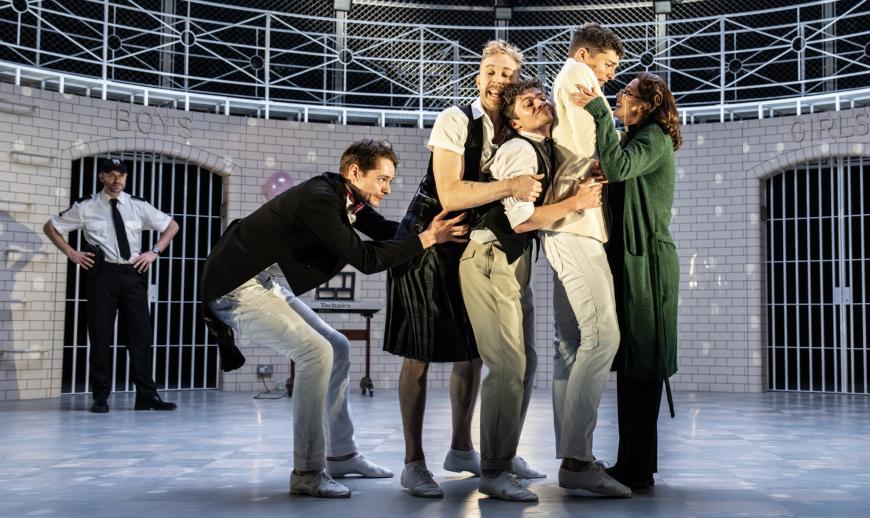
The leads are triple cast for this tour, with Romeo performed by Jackson Fisch, Paris Fitzpatrick, and Rory Macleod and Juliet danced by Monique Jonas, Hannah Kremer, and Bryony Pennington. Bourne went on to explain that his R&J is set “a bit in the future” and that it opens with the death scene. “We all know where it’s going to end up. … It’s how you get there that’s interesting. It’s a nice theatrical image, if you know what I mean. It’s always like the scene of a crime — that was our original idea — but it turned into slightly something else.”
As to his process and the question of what comes first — the music, steps, or concept — Bourne admitted that while Prokofiev’s score was a big impetus, Davies’s rearrangement is “not a big, grand, lush orchestra but is more edgy, in a way, with a smaller orchestra. That was obviously a big guide. The music is so brilliant, and listening to it, I was trying to imagine things different, which is great [for a new work].”
Bourne, who is an associate artist of both L.A.’s Center Theatre Group and London’s Sadler’s Wells, said that he knew the original ballet well and that the music was a “good guide to storytelling. But,” he added, “these days, as I’m much older now, I’m very much in collaboration with the dancers. I don’t move very much, so I set tasks and move along with them.”
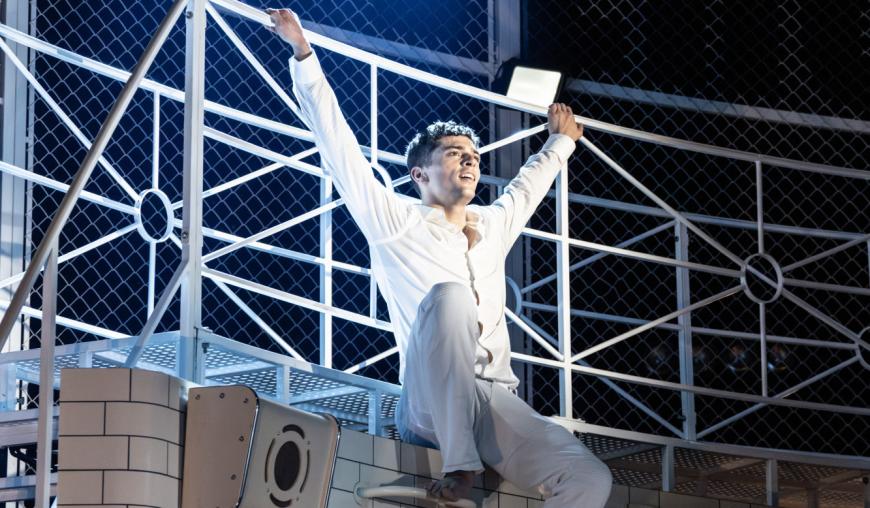
One of those tasks involved the iconic balcony scene. “We had a lot of fun creating a big balcony duet, [and] I wanted to do the longest kiss in dance history. They lock lips and continue to dance for quite a while. For me, little pecks on the cheek in ballet don’t seem very passionate. Young people, once they get together, they kind of go for it. It captures that real feeling of first love, [which is] created with the young cast.”
And talk about hot-button issues. Bourne tackles them head on in the happenings at the Verona Institute: “The mental health [interpretation] is something that is determined by the watcher, [and] that’s some peoples’ conclusion about what’s going on there. It’s interesting because a lot of subjects we cover [in the production] are very serious issues, [and] we have to take them seriously and portray them in a way that’s sensitive and also not used just for the sake of it. There’s a reason in terms of the story.”
Bourne acknowledged that these issues partly came out of his conversations with young people. “Their mental health, which is a big issue, is one of the concerns they have today. It’s hard to grow up in this world. Why are these young people [at the Verona Institute]? To be normalized, made to be something their parents think they should be. We also touched on sexuality and bullying. These young people were not the kind of young people their parents wanted to parade around.”
The radical imagination of Bourne’s productions is also a product of collaborating with the artistic team of New Adventures, which was founded in 2002. The company includes composer/arranger Davies, Associate Artistic Director Etta Murfitt, and production designer Lez Brotherston, whose set for Romeo and Juliet starts with a semicircular white-tiled wall, which becomes a backdrop to several scenes of violence.
“Lez is my first port of call to come up with a concept for the piece and the design: where it’s set, when it’s set. It’s very much me and him for quite a while. I have separate meetings about the music with Terry, depending on what it is — a new arrangement or new score. I tend to almost have written a story in my head [and] have a rough idea where it’s going.
“Then, there are workshops with trusted dancers. We play around, do some group movement, duets, solos — to help shape the piece. I don’t have all the answers straight away. Massive plot points come away during rehearsal period toward the end — little light bulb moments. It was important for me to listen as well, and being much older than the cast, I wanted to hear what they had to say.”
In addition to Romeo and Juliet at the Ahmanson, New Adventures’ Edward Scissorhands just finished its run at Sadler’s Wells and is now touring the U.K. Bourne says there are 30 dancers in each production, just one reason why the company has invested in talent development. Both the Swan School and Cygnet School, the latter launched in July 2021, are pioneering training programs for young people passionate about dance, with 13 Swan School alumni having gone on to perform with the company in various productions.
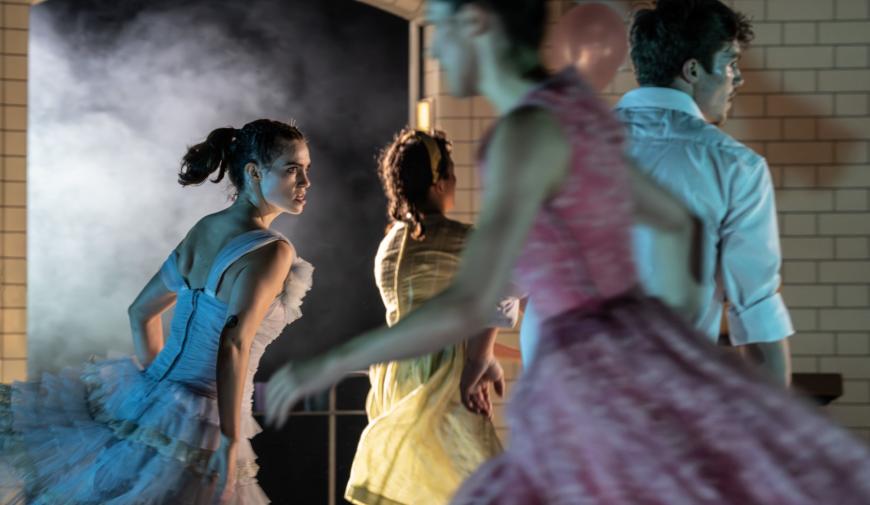
“The sort of work we do is fairly unique,” Bourne explained. “It requires dancers to be very good actors, which is not necessarily part of their training. Rather than just audition, we identify the talent and give them more time, not just one or two auditions, but we give particular workshops [on] how to get the job. It needs specialist training in a way that’s not necessarily training at a dance academy.”
Bourne also recommends films for his dancers to watch. “I’m an old fogey now. I bring in all my DVDs and things, [but] none have a DVD player. They stream things. It’s a very different world now, [but] I do still recommend they look at things [because] to watch actors is helpful and inspiring.”
Bourne’s most recent full-length production, The Midnight Bell, bowed at Sadler’s Wells in 2021. Created under COVID restrictions, the work is based on the novels of Patrick Hamilton, leaving one to wonder what might be next for the lad from London.
“I find as I get older, I’m more critical,” mused Bourne. “There was a time when I loved everything. Now it’s very few and far between. I still love the things I started out loving but [am] not loving new things. I haven’t got a new [idea for a production] as yet, [but] I’m sort of thinking about it. I’m in a happy position doing what I do. I don’t need to do something unless it strikes me, and that can be a long time coming. It will come.” He paused. “Something will happen, and that’s the next thing I’ll do.”


